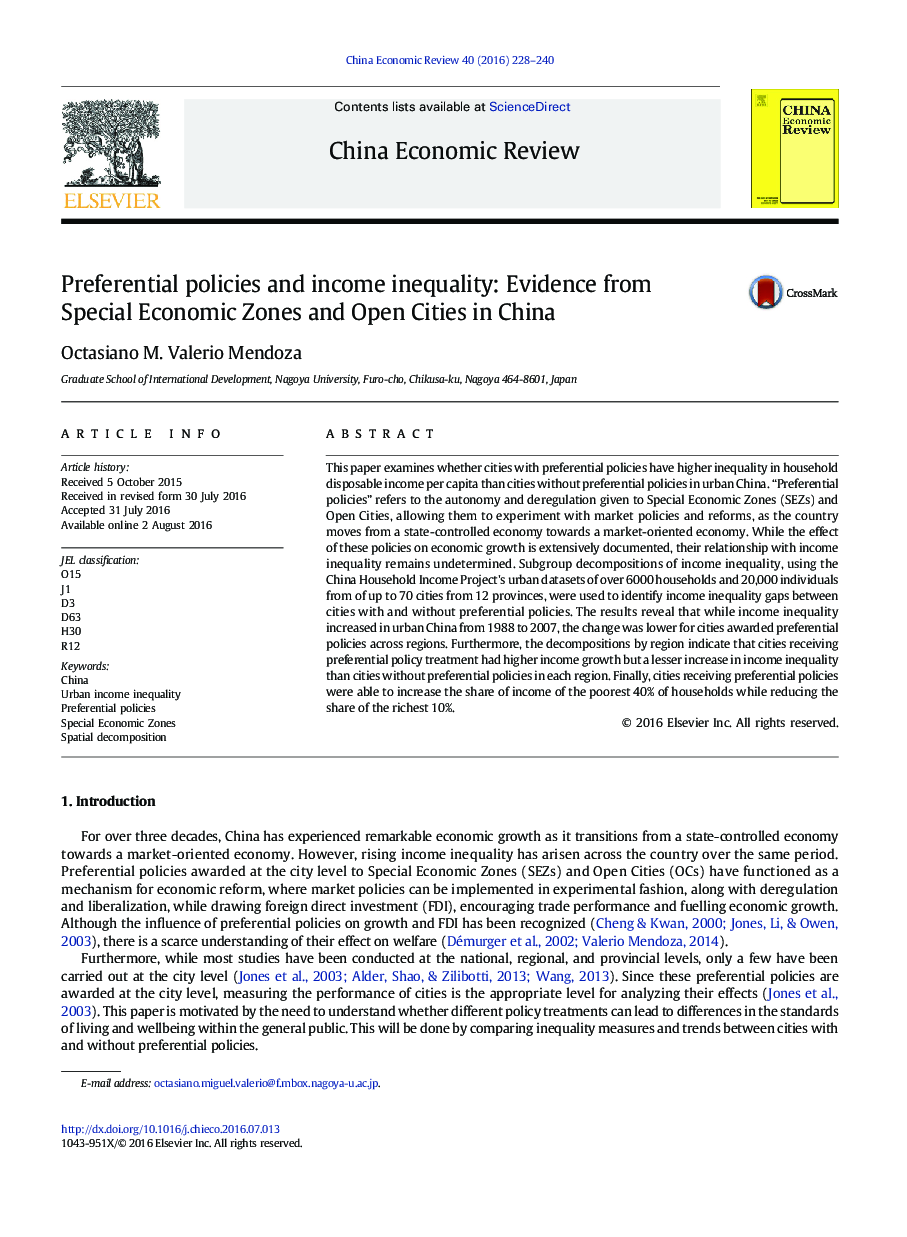| کد مقاله | کد نشریه | سال انتشار | مقاله انگلیسی | نسخه تمام متن |
|---|---|---|---|---|
| 5047200 | 1476261 | 2016 | 13 صفحه PDF | دانلود رایگان |
• Cities receiving preferential policies had higher income growth than other cities.
• Cities receiving preferential policies had lower inequality rise than other cities.
• Higher income growth and lower inequality rise were also evident across regions.
This paper examines whether cities with preferential policies have higher inequality in household disposable income per capita than cities without preferential policies in urban China. “Preferential policies” refers to the autonomy and deregulation given to Special Economic Zones (SEZs) and Open Cities, allowing them to experiment with market policies and reforms, as the country moves from a state-controlled economy towards a market-oriented economy. While the effect of these policies on economic growth is extensively documented, their relationship with income inequality remains undetermined. Subgroup decompositions of income inequality, using the China Household Income Project's urban datasets of over 6000 households and 20,000 individuals from of up to 70 cities from 12 provinces, were used to identify income inequality gaps between cities with and without preferential policies. The results reveal that while income inequality increased in urban China from 1988 to 2007, the change was lower for cities awarded preferential policies across regions. Furthermore, the decompositions by region indicate that cities receiving preferential policy treatment had higher income growth but a lesser increase in income inequality than cities without preferential policies in each region. Finally, cities receiving preferential policies were able to increase the share of income of the poorest 40% of households while reducing the share of the richest 10%.
Journal: China Economic Review - Volume 40, September 2016, Pages 228–240
